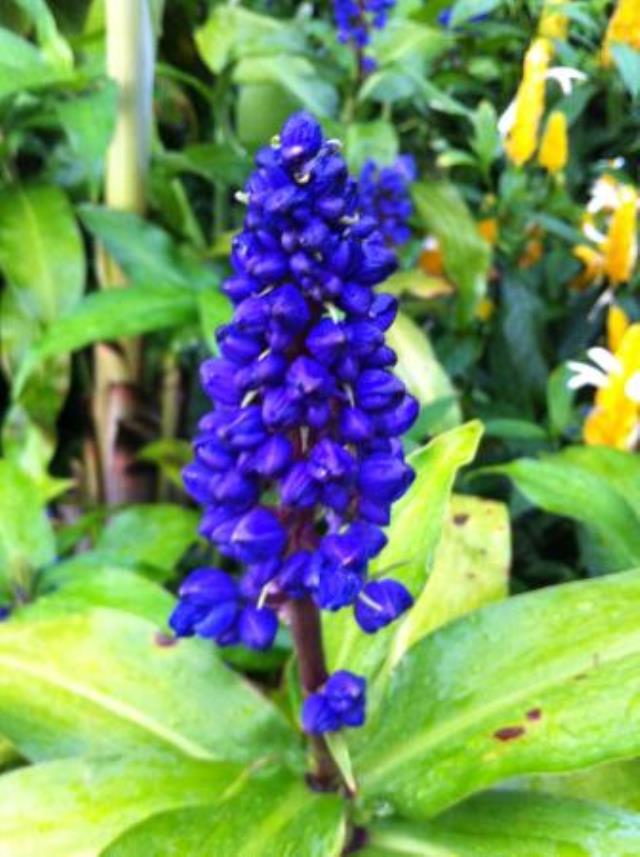By Beatrice Hawkins
Following on from daffodils in the week before last’s column, tulips are on my mind.
I saw a beautiful arrangement and it reminded me of an interesting fun fact about them.
It seems tulips are one flower that continues to grow even after they have been picked.
They are also “phototropic”, meaning that they grow towards light, so it is important to turn the vase each day to keep them upright.
Unlike most flowers they do not like their containers filled to the brim with water. They prefer to only have a few inches in the bottom and they do not like to share the vase with members of the narcissus family, like daffodils. However they do like a little bleach in the water.
Tulips also open and close in response to heat and light, protecting the pollen from rain etc and re-open when the sun comes out or the day warms to allow the insects access to pollinate the flowers. Clever plants!
At the moment the catalogues from southern specialist nurseries are full of beautiful varieties and Canberra and Bowral are undoubtedly planting and getting ready for the annual Floriade and Festival displays. Tulips can be grown successfully in pots and come spring are usually available for purchase in this way.
Another beautiful spring flowering bulb that is good value in a pot is the hyacinth. Available in many wonderful colours and all with the amazing perfume with which they are associated.
They are also fun for children to grow in an hourglass-shaped vase. Fill the vase with water to just below where the bulb finishes, cover with a paper bag to block out light or put in a cool dark cupboard for 3-5 days and the bulb will send roots down to the water. Make sure the base of the bulb does not touch the water as it will rot, but top the water up every few days. After the roots appear gradually introduce the container to more light and it will eventually be able to be put in full sun on a window sill in winter and will flower in early spring. After they have flowered you can plant them out ready to grow the next year. As with daffodils you will need to cut off the spent blooms, feed them and let the leaves die off naturally to feed the bulb for next year’s flowers.
The colours and perfume are hard to beat and I have found them easier to grow than tulips, even when I lived in an area with really cold winters. Daffodils can be grown in the same way. A good school project teachers!
If you do wish to grow any of these lovely bulbs in our area, remember to put them in your vegie crisper for a minimum of six to eight weeks as they need to be well chilled to flower well. The highest chilling temperature is about four degrees centigrade, so the vegie crisper is ideal. However be sure not to store them with fruit as the released ethylene gas reduces blooms. Now I know this all sounds complicated, but I assure you the results are worth the effort.
Some years ago a friend gave me a cutting from a blue ginger plant. I didn’t really know what to do with it and not being really good at propagating things I poked it into some potting mix and kept it watered and was astonished when it actually grew.
It is a native of Brazil and the botanical name is dichorisandra thrysiflora. It is an autumn flowering, frost tender, perennial considered rare and exotic … not something I would usually even attempt to grow. The plant spreads by means of underground runners similar to, but not as invasive as, bamboo.
The experts tell me it is good to plant the stems deeper than you usually would to encourage sucker growth to produce more stems and a bushier plant. More stems mean more flowers and once the beautiful, shiny, deep purple blue flowers are seen you will certainly want more. The leaves are large, attractive and a nice shiny green and in this climate would need an extremely well protected area to grow outside in the winter so it is best as a pot plant that can be shifted inside.
If planted out it can grow to two metres high and one metre wide, but is obviously restricted by the size of the pot you have it in. Mine survived last winter in a pot in a protected area and is less than half that size but flowering beautifully.
Some more trivia regarding tulips. A virus changed the colour of tulips in 1637 and people believed a new type of plant had been discovered and this led to a tulip craze where bulbs were used as money.
The price for a single bulb included a load of grain, 100lbs of cheese, 12 sheep, 10 oxen, five pigs, four barrels of beer, two tubs butter, two hogsheads of wine, a suit of clothes and a silver cup!
Don’t forget the Horticultural Society bus trip to the Queensland Garden Expo in Nambour on 8 July this year. This is always a fun and informative day out. Tickets are available at Danny Lyons and include the bus trip, morning tea and entry to the expo.
*This is an old article that has been digitised so our readers have access to our full catalogue.







